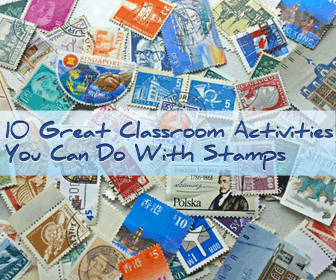Your Ticket to Travel: 10 Activities You Can Do With Stamps

January is national hobby month, and what better excuse do you need to bring the world of hobbies into the ESL classroom? Besides, as the cold mornings usher in colder afternoons, what better activity is there than submerging yourself in a hobby?

Everyone has a hobby, and the range of hobbies in the world is just about as diverse as the number of people on the globe. Start your hobby fun by brainstorming with your students all the hobbies they can think of. These might be hobbies that they have, that people they know have or just hobbies they have heard of. Some will be common, like collecting stamps or bottle caps. Others will be far more unique, like making cheese from scratch or practicing wilderness survival. Hopefully, by the end of the activity your students will accept that almost any activity can be a hobby. With that in mind, put your students into groups of about three students each to write a definition of the word hobby. Have groups share their answers before going to the dictionary for an official definition.
Once your class has an extensive list of hobbies, ask your students to share a little information about each of their hobbies. Encourage your students to share how they practice the hobby, why and when. Then give the class a few minutes to ask questions about the hobby. If any of their hobbies are not on the list, be sure to add them.
Using the list that your class brainstormed, tell your students that to celebrate national hobby month, you would like each of them to try a new hobby. The first step for each person will be to determine what hobby he or she would like to try. Hopefully, your list is extensive enough that their new hobby will be on it, but do not limit your students if something is not on the list. Then give your students some time to do a little internet research about the hobby they have chosen. If he decides to learn to crochet, your student should look on line for information on how to begin. If she wants to take up martial arts, she should look into the different types and choose the best fit for her.
As your students choose and then try out their new hobbies, ask them to keep a journal of the experience. At each step, ask your students to record what they are learning and how they feel. By the end of the month, have each person write an overall review of the hobby learning process including whether he or she intends to continue with the hobby or move on to a new one. If your students are willing, put their projects into a hobby library in the classroom where other students can read about their experiences and evaluation of the process. Someone else may want to try the hobby and would benefit from the information his classmate has shared.
One of the most common hobbies is coin collecting. Also known as numismatics, collecting coins can offer a tangible link with the past, but for ESL classes, it can also be a link to the globe. Tell your students that you are starting a class coin collection. Make sure your students understand that they should not contribute any coins of great value, and then invite each person to bring in one or more coins for the collection. Particularly useful in the class collection will be the coins from their home countries. As each person brings in a coin, give him or her a few minutes in front of the class to describe the coin and its origin. Then add that coin to the class collection. You may want to put all the coins in a large jar and allow your students to peruse the collection during free study periods. Another option would be to display the coins on a bulletin board that your students can look over when they have time. You can attach the coins to the board with rubber cement or silicone glue which you will be able to peel off once it is dry. Also, ask each person to bring in one or more pennies, and keep them in a separate container.
You can create a learning center with the coin collections by typing up some activities, laminating the sheets and then making them available with the coins. Try activities like comparing and contrasting two coins using a Venn diagram or having students survey what years the coins were minted. You can also use the collections for creative writing by asking students to write about a person or object portrayed on one of the coins. Ask your students some discussion questions like what they can tell about the country by what is printed on its money and what monetary system a particular country uses. Your students may have to speak with one another to get the answers to these questions particularly if coins are written in different alphabets or writing systems.
As your students explore new ways to relax and enjoy themselves, try your hand at something new, too, and share your experiences with your students. When you do, they will be more likely to share their own learning process.